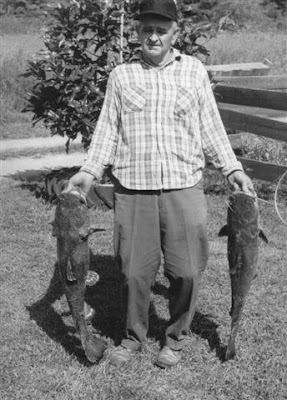
As I left yesterday's post, I was moaning over the difficulty of sorting through all of the Henry Dunns and William Evanses in early Georgia. Cela Dunn Evans' father, Henry, left a personal estate valued at nearly $1,000 in 1800, including cash of $309. In 1804, William Evans signed a receipt to the administrator of Henry Dunn's estate in Hancock County, Georgia, saying that on behalf of his wife he had received $128.48, the amount of her "legacy."
Hancock County was formed in 1793 and was adjacent to lands that formerly were held by Wilkes County. Following the Revolutionary War, there was a period of rapid growth in Georgia as settlers poured in from the Carolinas, Virginia, Maryland and other states. Counties and boundaries were in constant change. In 1811, Madison County was formed from several counties that at one time had been part of lands in Wilkes and Franklin Counties. It is in Madison County that I found the next record for William Evans and his wife Cela.
There are several land records for Thomas, William and David Evans in Madison County. From these records, it appears that our William Evans lived on land along Fork Creek and Holly Creek in the southeastern corner of Madison County. That corner was pulled from Elbert County which previously was part of Wilkes County. It is so important when researching family history to know how the boundaries changed from one period to the next since records can be found in several places.
Also important is knowing the who the neighbors of your ancestors were because these neighbors represented a marriage pool for your family; they often attended church together, sold land to each other, and even migrated to new lands together. Researching these neighbors can often provide clues to your own ancestor's past. Neighbors found near the Evans families in southeastern Madison County were Griffith, Eberhart, McCurdy, Adair, Allen and others.
In 1823, William Evans sold 88 acres on the "waters of Fork Creek" to James L. Griffith, and the deed was witnessed by David Evans, Thomas Evans and John Griffith. The deed abstract indicates that "Celia Evans, wife of William Evans, relinquishes her dower" which means that she was a willing party to the transaction and gave up her wife's interest in the land. I believe that "Celia" was actually "Cela" who was the daughter of Henry Dunn. Other researchers, however, claim the Celia was the daughter of John Leverett whose 1811 will in Wilkes County references his son-in-law, William Evans. I've found no mention of Celia as the name of the daughter of John Leverett and believe that this is a wrong conclusion.
Probable son of William Evans and Cela Dunn, Henry D(unn?) Evans, married Nancy Griffith, daughter of David Hannah Griffith and Nancy Eberthart. Henry named one of his daughters Cela Daymond Dunn, obviously after his mother. He also named his first two sons Charles Thomas Evans and William David Evans.
My great-great-great grandfather, William M. Evans, indicated that his parents were William Evans and Sela Dunn. He named a daughter Sela, a son John Thomas (my ancestor) and a son William. William's brother, Thomas, named a daughter Sela and a son William.
Another clue was found in the
Paulding County History & Biography publication. The biography of Henry Bone indicates that his mother was Nancy Evans, daughter of William and "Celia" Evans of Madison County, Georgia. Nancy married Bailey Bone in 1826 in Madison County, and they moved to Carroll County, then Paulding County, Georgia. Paulding is where my William Evans and his brother, Thomas, were both married. A third possible sibling is Caroline Evans, who married James Lee Adair, son of Bozeman Adair, in Madison County in 1838 and moved to Paulding County, Georgia. The ages of these possible siblings all fit the census records for William Evans of Madison County.
The last census record for William Evans of Madison County is 1830. It would seem that he and Cela died before 1840. The young male in their household, under age 5, appears to show up in the 1840 household of his brother, Thomas Evans, as a male age 10-15 years old. Thomas was only recently married, in 1838, and thus this could not be his son. Enumerated next to Thomas "Evens" was his brother and my ancestor, William Evens, as the single occupant of his household. Neighbors of Thomas and William Evans in this 1840 census were William Bone, William Adair, W.S. Adair, and others. William Adair was also a neighbor of William and Cela Evans back in Madison County in 1830.
Evans brothers, William and Thomas, moved to Itawamba County, Mississippi not long after 1840, settling on lands near present-day Tremont and close to the border with Alabama. William died in 1896 and was buried in the old Asbury (Evans-Gilmore) Church Cemetery, now on private land. From what I've been told, the old Asbury Methodist Church burned and a new one was built that now sits on Highway 23 south of Tremont. Thomas moved on to Texas where he died in Itasca in Hill County where many of his children migrated.
Although I am fairly confidant that the wife of William Evans of Madison County, Georgia was Cela Dunn, daughter of Henry Dunn, more research needs to be done. Whether her name was Cela, Sela, Selah or Celia, she must have been a special person for there were many grandchildren and great-grandchildren named after her. Hopefully, some answers will lie in the Georgia State Archives, and if they do, I'll let you know.



























